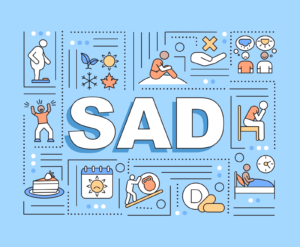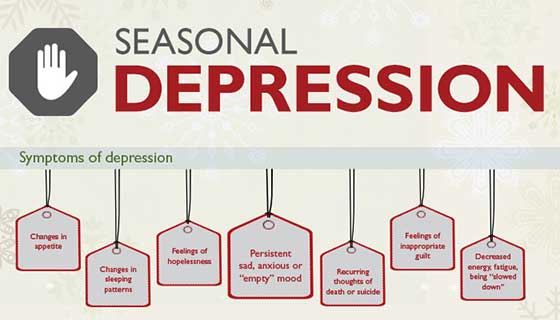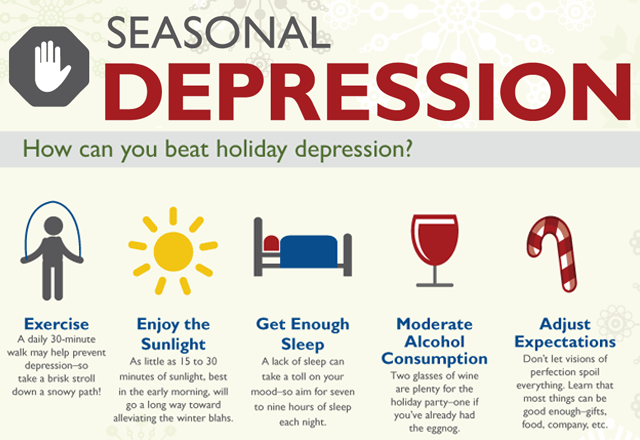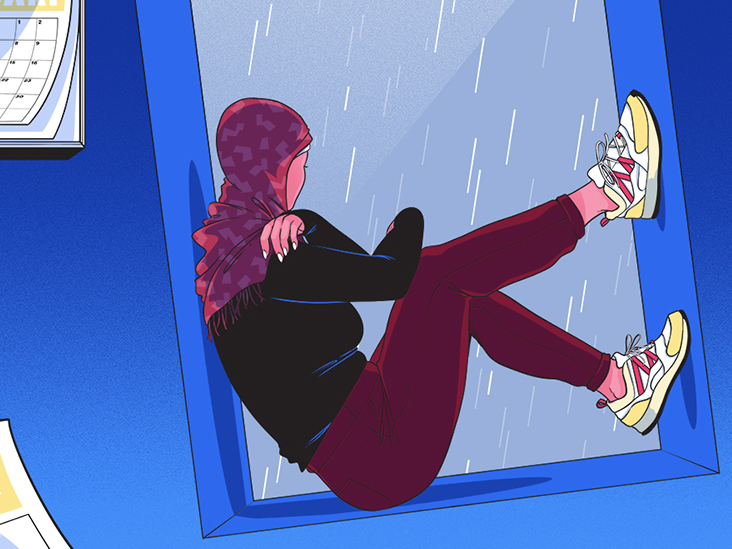When the clocks change and the days grow shorter, many people get a sense of relief. But for some, that feeling is short-lived. They may experience seasonal depression in between the seasons. Here’s what you need to know about seasonal depression and how to deal with it.
Contents
What is Seasonal Depression?

Seasonal depression is a type of depression that is typically experienced during specific seasons. This includes fall, winter, spring, and summer.
Many factors can contribute to seasonal depression, including changes in daylight and darkness, weather conditions, and other activities that are common during these seasons.
If you or someone you know is experiencing seasonal depression, it’s important to seek professional help. There are many resources available to help with seasonal depression, including online communities and support groups.
What are The Different Symptoms of Seasonal Depression?

Symptoms of seasonal depression can vary depending on the person. However, some common symptoms are feeling sad or lonely more often during the winter, feeling irritable or angry more often during the winter, and having a low mood most of the time. There is no one specific symptom that indicates that someone is experiencing seasonal depression, but it’s important to be aware of the symptoms so you can get help if you need it.
Some of these signs are:
Feeling Irritable: One of the most common symptoms of seasonal depression is feeling irritable. This can range from being short with friends and family to have a lot of trouble falling asleep or staying asleep, to feeling restless or agitated.
Losing Interest in Activities: Another common symptom of seasonal depression is losing interest in activities that used to be fun. This might include losing interest in hobbies, socializing, or spending time with friends and family.
Changes in Eating Habits: Many people experience changes in their eating habits during this type of depression. They might start eating more junk food, sweets, or carbohydrates than usual. Or they might lose weight even though they’re not exercising as much.
Changes in Mood: Another common symptom of seasonal depression is a change in mood. This can include feeling sad, hopeless, unmotivated, or isolated from others.
Low Energy levels: Another symptom of seasonal depression is having low energy levels. This might include feeling tired all the time, not being able to get out of bed, or feeling like you don’t have enough energy to do anything.
Feelings of guilt or worthlessness: One of the most common symptoms of the type of depression is feelings of guilt or worthlessness. This can include feeling like you’re responsible for everything wrong in your life, feeling like you’re a bad person, or feeling like you can’t do anything right.
Changes in sleep habits: One of the most common changes that people experience during the type of depression is a change in their sleep habits. They might start sleeping more or less than usual, they might have trouble sleeping at all, or they might have trouble staying asleep.
How Common Is Seasonal Depression?
There is no one answer to this question as the prevalence of seasonal depression will vary depending on the population being studied. However, a study published in The Journal of Affective Disorders found that between 6 and 14 percent of Americans experience some form of seasonal depression during the winter season.
While the prevalence of seasonal depression may vary, what is common is that it can be a tough time for many people. Seasonal depression can make you feel tired and tends to affect your mood and energy levels. It can also cause you to have trouble sleeping, eat poorly, and have difficulty concentrating. If you are feeling particularly down in the wintertime, there are steps you can take to try to get through it without resorting to medication or therapy.
How To Cope With Seasonal Depression?

There’s no one answer for coping with seasonal depression, as everyone experiences it differently. However, some basic tips to follow include:
Talk to your doctor or therapist about your symptoms and how they’re affecting your life. They can provide you with additional resources and advice on how to cope. There may be many different ways to deal with seasonal depression, so finding the one that works best for you is important.
Keep a journal to document your moods and how they’re changing throughout the season. This can help you track your progress and provide you with some insights into why you’re feeling down in the first place.
Engage in activities that make you happy and keep you occupied. This can help take your mind off of your depressive symptoms and help you feel positive about yourself.
–Remind yourself that it’s not permanent and that things will eventually get better. This type of depression is a temporary condition that will eventually pass.
Get plenty of exercises. Exercise has been shown to improve moods in both men and women, and can help reduce levels of stress hormones.
Set simple goals for yourself during the season. Rather than trying to accomplish too many things at once, focusing on a few smaller goals will help alleviate some of the pressure you may feel.
Try to relax and take things easy during the season. This may be harder than it sounds, but taking some time for yourself every day can make a big difference.
Talk to friends and family about your feelings. Getting support from loved ones can be very helpful in times of stress.
How To Get Help For Seasonal Depression?
Seasonal depression is a type of depression that most often occurs during the winter months.
There are some ways through which you can get help for this type of depression:
1. Talk to a therapist or counselor. This is a good way to talk about your experiences and figure out some coping mechanisms.
2. Join a support group for people with this type of depression. These groups can be a great way to connect with others who are going through the same thing and to share resources and advice.
3. Try cognitive behavioral therapy (CBT). CBT is a type of therapy that helps people change how they think about their symptoms and how to manage them. It can help treat both depression and anxiety, so it may be a good option for you if treatment for your depression hasn’t been working well.
4. Take medication if necessary. Many people find that medication helps manage their symptoms of this type of depression. Talk with your doctor about the best option for you, depending on your specific situation.
5. Seek out additional support. If you don’t feel like you’re able to manage your symptoms on your own, consider seeking out additional support. This could include talking to a therapist, talking to friends or family members, or seeking out a support group.
Conclusion
If you or someone you know suffers from seasonal depression, this guide is for you. It offers tips on managing your symptoms and describing them to medical professionals. Additionally, the guide provides information about effective treatment options and supports self-help strategies. If you are feeling down during the autumn or winter months, don’t hesitate to reach out for help.
Hope this article was of help to you! If you are suffering from seasonal depression, you may seek help from Therapy Mantra. We have a team of highly trained and experienced therapists who can provide you with the tools and skills necessary for overcoming seasonal depression. Contact us today to schedule an online therapy or download our free Android or iOS app for more information.


